#amilcare ponchielli
Text



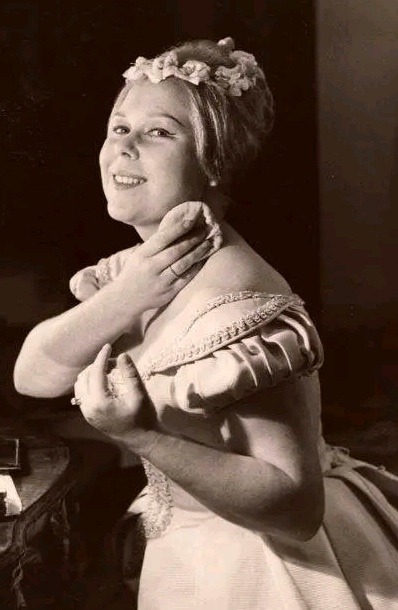
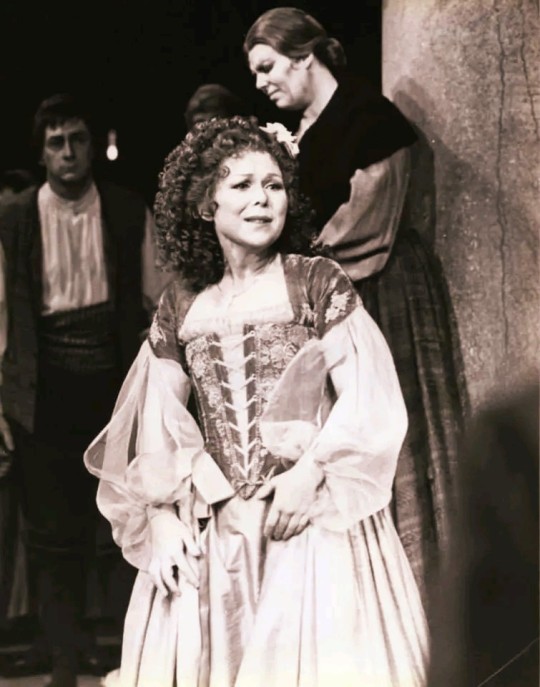



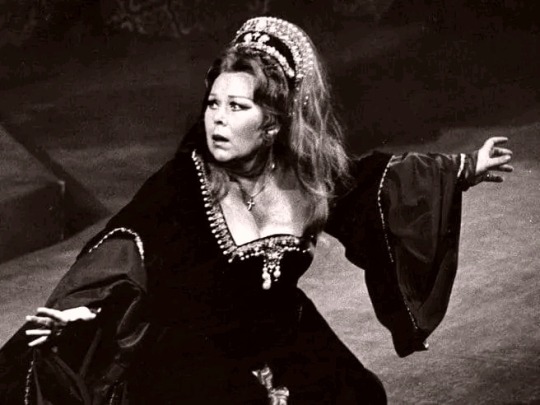

RENATA SCOTTO
as Vitellia in MOZART's *La Clemenza di Tito*, 1984 (ph 1&2)
IDEM
as Violetta Valery in VERDI's *La Traviata* (ph 3)
as Amina in BELLINI's *La Sonnambula* (ph 4)
as La Gioconda (PONCHIELLI) (ph 5)
as Lady Macbeth in VERDI's *Macbeth*
as Elisabetta di Valois in VERDI's *Don Carlo*
as Lucía in DONIZETTI's *Lucía di Lammermoor* Copyright ©️ Tamino Autographs
as Anna Bolena in DONIZETTI's opera of the same name.
in *Iván Susanin*
#4opera+love#4operalove#renata scotto#mozart#la clemenza di tito#giuseppe verdi#la traviata#bellini#la sonnambula#amilcare ponchielli#la gioconda#macbeth#don carlo#donizetti#lucia di lammermoor#anna bolena#ivan susanin
38 notes
·
View notes
Text
youtube
Maria Callas is 100 today, this is Suicidio! from La Giocanda. The divine of the divine. Happy birthday, La Divina.
#maria callas#la divina#la gioconda#amilcare ponchielli#the chest voice!#the full bodied groans of pain!#the tenderness#HOW DOES IT STILL MANAGE TO BE TENDER?#she is and will always be peerless#opera tag
14 notes
·
View notes
Text
youtube
I've made a video compiling the instances of real-world classical music playing in Aladdin.
Tagging @somethingstrangeisherehehe and @theuncoupleddiningcar
#youtube#aladdin#aladdin the animated series#aladdin disney#aladdin series#aladdin tv series#aladdin the series#aladdin 1994#johann strauß#amilcare ponchielli#lucanio pavarotti#classical music
15 notes
·
View notes
Text
#disney#fantasia#polls#disney polls#the sorcerer's apprentice#the nutcracker suite#rite of spring#night on bald mountain#ave Maria#the pastoral Symphony#dance of the hours#toccata and fugue in d minor#bach#tchaikovsky#paul dukas#stravinsky#beethoven#amilcare ponchielli#modest mussorgsky#schubert#chernabog#sorcerer mickey#the nutcracker#yen sid
26 notes
·
View notes
Text

youtube
10 notes
·
View notes
Text
ROUND 1 - OVERTURES PART 2
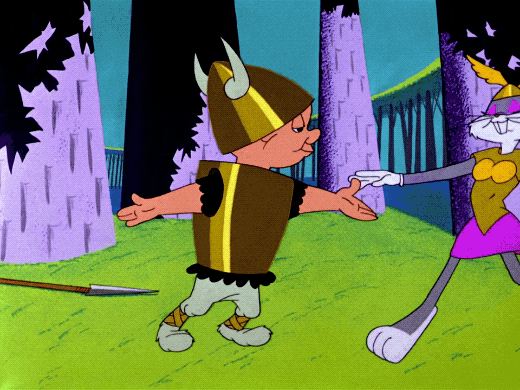
Songs under the cut
youtube
youtube
youtube
youtube
Die Walküre is the opera that made THE Viking lady, the representative character of all of opera.
youtube
youtube
youtube
youtube
youtube
youtube
#opera#opera music#tumblr polls#polls#gioachino rossini#william tell#richard strauss#capriccio#amilcare ponchielli#la gioconda#richard wagner#die walküre#alexander borodin#prince igor#charles gounod#faust#giuseppe verdi#la traviata#macbeth opera#ludwig van beethoven#egmont#nikolai rimsky korsakov#the snow maiden#Youtube
3 notes
·
View notes
Text
(Archive) Animated movie of the day: Fantasia (1940)
Originally posted: January 4th, 2022
Walter Elias Disney, a controversial man in life and legacy. A businessman at heart, selling an illusion to audiences he so called magic, and tried to hide many of his lesser traits and allegiances throughout his life. Nonetheless, if there's one thing I can actually admire about the man is that he respected animation as a medium, and this is reflected in one of his passion projects: the unprecedented masterpiece that is Fantasia.
A joint work between the Walt Disney company, professional critic Deems Taylor as the Master of Ceremonies and Leopold Stokowski in the direction of the Philadelphia Orchestra, this anthology of classical music with animation of different styles and flavors ranges from abstract and surreal imagery, to the whimsical, frightening and sublime when it comes to the more defined storytelling of other segments. Music from Bach, Tchaikovsky, Dukas, Stravinsky, Bethooven, Ponchielli and Mussorgksy is featured, each as their own dedicated short, along with a small intermission where a sound track is given characterization.
The end result is a highly varied compilation of shorts with both subtle and stark differences in art direction, and a very experimental approach to what animation is about. In many, many ways it was impressively ahead of it's time, which only makes it's dissapointing performance at the box office back in the day all the more saddening.
This isn't to say everything about it is timeless or feels contemporary. While still a remarkable achievement of animation, where just short of 80 years later it's still engrossing and impressive, instances like the now cut character of Sunflower in the Pastoral Symphony segment reflect the ugly, racist side of American culture at the time. There's other less insulting but still dated bits, like how Taylor claims nobody performs the Nutcracker ballet anymore. Yeah, right.
Even so, for any animation enthusiast it's a must watch.

Honestly, this movie gives so much to talk about for an animation enthusiast. I think it warrants writing some thoughts about each segment.
Toccata and Fugue in D Minor(Johann Sebastian Bach): A powerful musical piece to start, but visually speaking it's not the strongest opening. While I do appreciate(immensely I might add) that Disney did NOT go for the stereotyped scary imagery associated with this piece but instead something more sublime (given the dynamic range the toccata actually offers), the abstract imagery doesn't necessarily lend anything substantial to the music, even when it goes from dark places to the very heavens. That is, when the animation actually starts, since a not so small segment of the short is the performers shot in silhouette. Stokowski's arrangement of the piece isn't the most evocative version of this musical milestone either.
Still, on a technical level, the animation is remarkable, and given the significant shifts in the musical structure they did what they could.
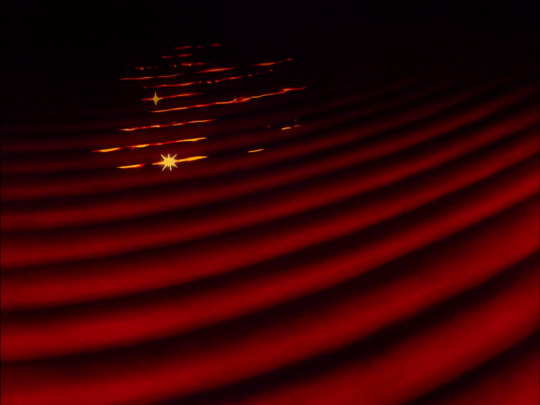

---
Nutcracker suite(Pyotr Ilyich Tchaikovsky): While the narrative is less abstract, it's certainly not very defined either. The animation, however, is much more evocative and beautiful to look at, with soft movements of ballet like quality; all too fitting for the piece.
Given it is associated to a narrative that is already well defined, the animators pretty much gave themselves a challenge by pursuing a significantly different direction that, while still using imagery related to fairies, it has a focus entirely put on the beauty of nature. Giving flowers and mushrooms alike anthropomorphic qualities but also allowing them to just move at the pace of the wind, the effects animation here is as stunning as it is educational for any aspiring animator. Colorful and soft, it's just a visual delight.


---
The Sorcerer's Apprentice(Paul Dukas): By far the most popular and well known segment of the film, this short based on a poem from Goethe puts Mickey Mouse in the role of said apprentice under the guide of Yen Sid(subtle reference right there). The irony of the impressionist piece being the first one to get a proper narrative aside, this short is still as charming as ever was.
While the effects animation isn't any less remarkable(in fact, my hat goes off for all those involved in the water animation of this segment), the pressence of Mickey Mouse and the broom make the character animation be the star of the show this time, and it still holds up. It goes all the way to show the power of well composed body language that you can follow the story even without Taylor's prior introduction.

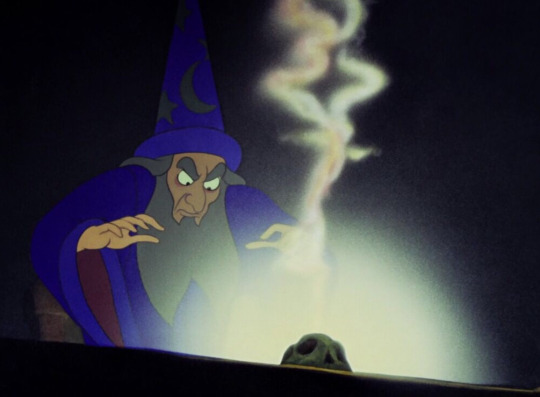
---
Rite of the Spring(Igor Fyodorovich Stravinsky): A piece from the only composer that was still alive to see the film(who also GREATLY disliked the interpretation of his piece, calling the performance execrable) this is a valiant effort of wordless stoytelling with creatures of minimal anthropomorphic qualities.
While Taylor's introduction already hammers in the era in which this was made(he has to tiptoe around calling scientific observations "facts" to not get flak from conservative Christians), the representation of dinosaurs is anachronistic and dated as well, so is the vagueness of what destroyed them(the crater of the meteor that caused their mass extinction wasn't discovered until 1978).
Still. the segment creates genuine feelings of menace from the Tyrannosaurus Rex, and the effects animation is still remarkable(special mention goes to the magma and the smoke, even though fire doesn't look quite right in some shots). It does what it sets to do in presenting the power of nature.


---
Intermission/Meet the Soundtrack: The brief jazz number by the orchestra is nice, and honestly, the Sound track is pretty adorable for a non descriptive collection of shapes. It's also impressive how they managed to give different sounds visual abstract equivalents.
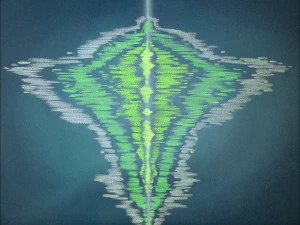
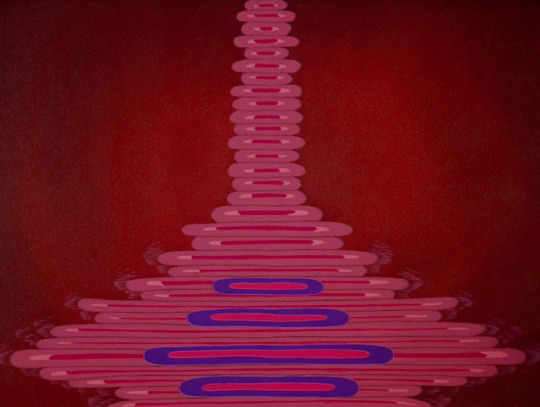
---
Pastoral Symphony(Ludwig van Beethoven): The only part of Disney's Movie canon to feature female nudity along with the Night on Bald Mountain segment(at least until later rereleases), it's whimsical depiction of Greek Mythology still manages to be more accurate to the source material than future endeavors of the company such as Hercules, humorously enough. The greek gods weren't nice people, and this segment has some fun with that(remember kids, Zeus is a jerk). The extremely simple love story between the centaurs is still wholesome though, and the imagery is very creative.
The animation complexity of this short lead to some small animation errors but you're not gonna notice if you're not looking for them. It also has in my opinion the most beautiful backgrounds of the film, rivalled only by some segments of the naturalistic beauty of the Nutcracker Suite.
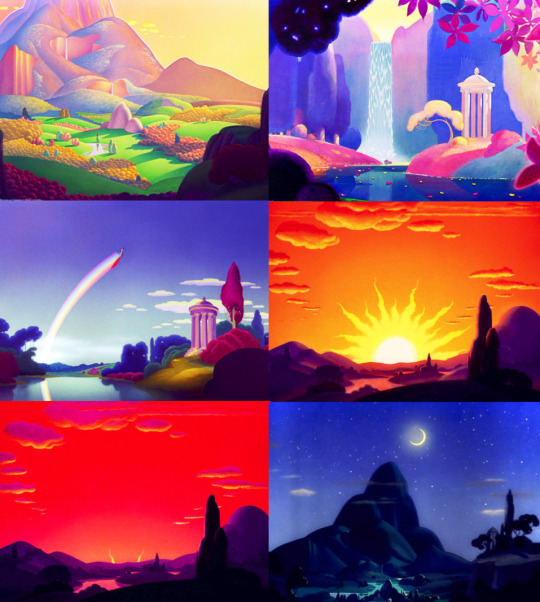
---
Dance of the Hours(Amilcare Ponchielli): Charmingly innocent in a way that it's not seen very often anymore, it uses it's ballet roots in a fairly literal fashion by making a ballet number with different species of animals representing different hours of the day. The body language of these animals is just brilliant, they're expressive, carry a well defined movement to each one(that isn't realistic but definitely distinctive) and there's something inherently comical about how they dance, even when they do it effectively.
Honestly given the premise of the ballet this is the one short where I'd have gone abstract. I can't complain though, since the humorous gags and silly imagery just make it a sincerely funny experience, albeit not the most remarkable among the anthology(plus, female ostriches don't have the black and white plumage, but let's not get too nitpicky here).


---
Night on Bald Mountain/Ave Maria(Modest Petrovich Mussorgsky/ Franz Peter Schubert): Try to act surprised when I tell you the spooky segment is my favorite part of the movie. At the same time, however, I think it's warranted in this case. Horror is not something animation was known for back in the day. Even if movies like Pinocchio had some remarkably dark imagery, the medium in general was being pushed towards this kid oriented market, so this short was in many ways daring. And the end result both hits the mark with the fear and also happens to deliver one of the more complete narratives in the film. It's not just about the spooks, but the catharsis afterwards.
Chernabog(or as it is referred by Taylor, Satan himself) has such a commanding presence it's overwhelming. Even if you don't find him scary you WILL remember his face, full of wickedness and evil(Vladimir Tytla's animation of the character is one of the biggest achievements in the entire film, which is saying something). The imagery is adequately hellish as well, thanks to a masterful art direction that brings the shadows of Walpurgis night to life. The use of experimental animation techniques helped as well, with the ghosts requiring some clever use of distorted mirrors to create. And the release from the nightmare with the Ave Maria, which was the most demanding shot for the animators at the time(and not just on this project but maybe in animation as a whole at that point)? The perfect cap for a movie that made history for good reason.



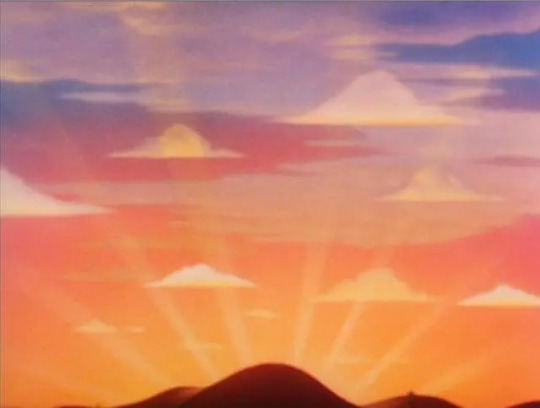
So yeah, that's Fantasia. Man, that was a long one.
#roskirambles#animated films#walt disney#johan sebastian bach#pyotr ilyich tchaikovsky#paul dukas#johan wolfgang von goethe#igor stravinsky#ludwig van beethoven#amilcare ponchielli#modest mussorgsky#franz schubert#mickey mouse#chernabog#fantasia#greek mythology#leopold stokowski#deems taylor
4 notes
·
View notes
Text
youtube
Amilcare Ponchielli (1834-1886) - La Gioconda, Op. 9 - "Cielo e mar!" ·
Luciano Pavarotti ·
New Philharmonia Orchestra · Leone Magiera
3 notes
·
View notes
Text
youtube
1 note
·
View note
Text


December 5. 1930 at The Metropolitan Opera.
Take a look on the cast of this Performance.
And also what is on in the same week.
#La Gioconda#Amilcare Ponchielli#Arrigo Boito#Tobia Gorrio#opera#bel canto#Victor Hugo#Rosa Ponselle#soprano#dramatic soprano#Marion Telva#mezzo-soprano#Ezio Pinza#Bass#Faina Petrova#Beniamino Gigli#tenor#Giuseppe Danise#baritone#Alfredo Gandolfi#Giordano Paltrinieri#Louis D'Angelo#Arnold Gabor#classical music#music history#metropolitan opera#met#the met#metropolitan opera house
10 notes
·
View notes
Photo

Amilcare Ponchielli (1834-1886) was an Italian composer, mainly of operas. The images on the stamp features a portrait of Ponchielli and a scene from his popular opera La Gioconda (literally, "The Happy Woman"). The opera first performed at La Scala, Milan, in 1876. The stamp was designed and engraved, with photogravure by Rita Morena. It was issued on March 8, 1986 the centenary of the composer's death.
3 notes
·
View notes
Text
ponchielli went off writing this chorus
#opera tag#opera#i lituani#the lithuanians#i’m still mad there’s no filmed staging of this opera#ponchielli#amilcare ponchielli#choruses#things that slap#Spotify
2 notes
·
View notes
Text
Today is the anniversary of this opera's premiere, and it's Corelli's birthday. Obviously then, this must be today's listening!
0 notes
Link
Ópera completa com legenda em português: parte1, parte2, parte3.
La Gioconda (”A Mulher Feliz”), precursora do verismo, é um famoso exemplo do gênero “Grande Ópera” italiana, o equivalente à francesa Grand-Opéra.
No final do 1º ato é cantado em latim um trecho da milenar oração Santo Anjo que ouvimos de nossos pais na infância e que reconhece a existência de nossos anjos da guarda e invoca sua ajuda em nosso tempo de necessidade.
- Palestra do ECAI “La Gioconda”
- “Dança das horas” na Disney
- “Dança das horas” - Paris 2013
- “Dança das horas” - Vaganova Ballet Academy
- Ária “Cielo e mar”, tenor Franco Corelli
Personagens principais:
- Gioconda, uma cantora
- Laura Adorno, uma genovesa
- La Cieca, mãe de Gioconda
- Enzo Grimaldo, um príncipe genovês disfarçado de marinheiro Dálmata
- Barnaba, espião da Inquisição
- Alvise Badoero, um dos líderes da Inquisição, marido de Laura
- Zuàne, um barqueiro competindo numa regata
- Isèpo, um escrivão
Sinopse: Lugar: Veneza. Época: século XVII.
A história gira em torno de uma mulher, Gioconda, que ama tanto a mãe que, quando Laura, sua rival apaixonada pelo coração de Enzo, salva a vida de sua mãe, Gioconda deixa de lado seu próprio amor romântico para recompensá-la. O vilão Barnaba tenta seduzir Gioconda, mas ela prefere a morte.
Ato 1 - A boca do leão
O pátio do Palácio dos Doges
Durante as celebrações do Carnaval antes da Quaresma, enquanto todos estão preocupados com uma regata, Barnaba, um espião do Estado, observa lascivamente La Gioconda enquanto ela conduz sua mãe cega, La Cieca, do outro lado da praça. Quando seus avanços amorosos são firmemente rejeitados, ele exige sua vingança denunciando a velha senhora como uma bruxa cujos poderes malignos influenciaram o resultado da corrida de gôndola. Somente a intervenção de um jovem capitão de mar que mantém a turba enfurecida afastada.
A calma é restaurada com a aproximação de Alvise Badoero, membro da Inquisição de Veneza, e sua esposa, Laura. Laura coloca La Cieca sob sua proteção pessoal e, em gratidão, a velha apresenta-lhe seu bem mais precioso, um rosário. Barnaba, de olhos atentos, percebe um comportamento furtivo entre Laura e o capitão do mar, indicando um relacionamento secreto. Lembrando que Laura estava noiva do agora banido nobre Enzo Grimaldo antes de seu casamento forçado com Alvise, Barnaba percebe que o capitão do mar é Enzo disfarçado.
Barnaba confronta Enzo, que admite que seu objetivo ao retornar a Veneza é pegar Laura e começar uma nova vida em outro lugar. Barnaba sabe que Gioconda também está apaixonada por Enzo e ele vê uma oportunidade para melhorar suas chances com ela, ajudando Enzo com seu plano de fuga.
Quando Enzo se vai, Barnaba dita uma carta a Alvise revelando a infidelidade de sua esposa e o plano de fuga dos amantes. Ele não sabe que foi ouvido por Gioconda. O ato termina com Barnaba colocando a carta na Boca do Leão, onde todas as informações secretas da Inquisição são postadas, enquanto Gioconda lamenta a traição de Enzo, e a multidão retorna às suas festividades.
Ato 2 - O Rosário
O convés do navio de Enzo
Enzo espera por Barnaba para remar Laura da cidade para sua embarcação. Sua alegre reunião é ofuscada pelos medos de Laura, já que ela não confia em Barnaba. Aos poucos, Enzo consegue tranqüilizá-la, e ele a deixa no convés enquanto ele se prepara para a partida.
La Gioconda vem seguindo Laura com a intenção de se vingar de sua rival. Alvise e seus homens armados também estão em perseguição, mas quando Gioconda está prestes a esfaquear Laura, ela vê o rosário de sua mãe pendurado no pescoço e tem uma mudança instantânea no coração. Ela apressa Laura em seu barco para que ela possa fugir de seus perseguidores.
Enzo retorna ao convés para descobrir que Laura fugiu deixando Gioconda triunfante. Além disso, os homens de Alvise estão se aproximando rapidamente. Ele incendeia o navio em vez de deixá-lo cair nas mãos de seus inimigos antes de mergulhar na lagoa.
Ato 3 - O Ca’ d'Oro (Casa de Ouro)
Palácio de Alvise
Laura foi capturada e seu marido vingativo insiste que ela deve morrer envenenando-se (efetivamente cometendo suicídio e condenando-se ao Inferno). Mais uma vez Gioconda seguiu e encontrou seu caminho para o palácio, desta vez com a intenção de salvar sua rival. Encontrando Laura sozinha, Gioconda substitui o frasco de veneno por uma droga poderosa que cria a aparência de morte. A segunda cena começa com Alvise recebendo seus companheiros da nobreza no palácio; Barnaba e Enzo estão entre os presentes. Entretenimento luxuoso é fornecido e o ato termina com o famoso Ballet Dance of the Hours. O clima de folia é destruído quando um sino de funeral começa a soar e o corpo de Laura é revelado à espera do enterro. Um perturbado Enzo revela seu disfarce e é prontamente agarrado pelos homens de Alvise.
Ato 4 - O Canal Orfano
Uma ruína na ilha de Giudecca
Em troca da libertação de Enzo da prisão, La Gioconda concordou em se entregar a Barnaba. Quando Enzo é trazido, ele fica furioso quando Gioconda revela que o corpo de Laura foi trazido de seu túmulo. Ele está prestes a esfaqueá-la quando a voz de Laura é ouvida e a ajuda de Gioconda na reunião dos amantes se torna clara. Enzo e Laura escapam, deixando La Gioconda para enfrentar os horrores que a aguardam com Barnaba. As vozes dos gondoleiros são ouvidas ao longe, dizendo que há cadáveres flutuando na cidade. Quando Gioconda tenta sair, ela é pega por Barnaba. Ela então finge dar as boas-vindas à sua chegada, mas, sob o disfarce de se colocar em suas joias, agarra um punhal e se esfaqueia até a morte. Em raiva frustrada, Barnaba tenta perpetrar um último ato do mal, gritando para o corpo sem vida “Ontem à noite sua mãe me ofendeu. Eu a afoguei!”
youtube
0 notes
Text
Veja "Ponchielli: La Gioconda - E un anatema!....Il mio braccia t'afferra!" no YouTube
youtube
#youtube#music#opera#17th century#amilcare ponchielli#anita cerquetti#giulietta simionato#mario del monaco
1 note
·
View note
Text
Capriccio - VI
Amilcare Ponchielli (1834 - 16 gennaio 1886): Capriccio in fa minore-maggiore per oboe e pianoforte (c1856). Gianfranco Bortolato, oboe; Riccardo Caramella, pianoforte.
youtube
View On WordPress
0 notes